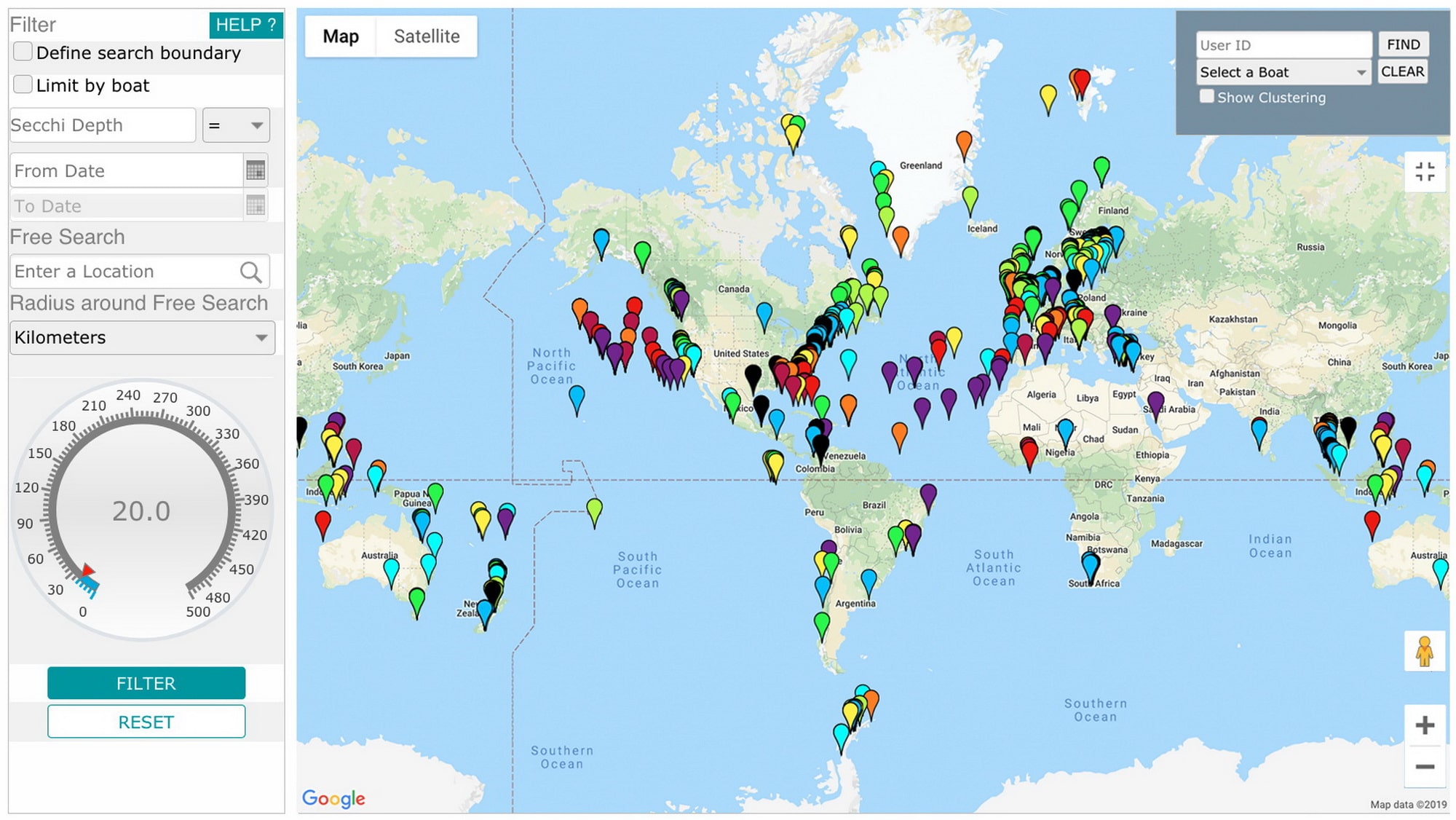The Secchi Disk study collects valuable data for a long-term scientific study on the health of our oceans by recording the distribution and abundance of phytoplankton at the sea surface. More significantly, it is a hands-on study that promotes interest in and understanding of the marine ecosystem, particularly among younger participants. That should result in a more enlightened view of our dependence on the ecosystem, and of the importance of safeguarding its health through our own actions.
THE SECCHI DISK PROJECT
THE SECCHI DISK PROJECT
They also comprise the nutritional base that ultimately supports the entire marine food chain, right up to sea birds, seals, polar bears and, of course, humans through the seafood we eat.
Living at the surface of the sea, phytoplankton are particularly sensitive to changes in sea surface temperature. A recent study of global phytoplankton over the past century to 2010 suggested that concentrations have declined by 40 per cent over the last 50 years, due to rising sea surface temperatures resulting from current climate change. It is essential that we understand these changes and the Secchi Disk study aims to collect much more data on the phytoplankton with the help of seafarers across the world.
Easy-access citizen science for seafarers
old and young, recreational and professional
How it works
The Secchi Disk is a plain white disk of 30 cm diameter, which is attached to a tape measure and weighted from below so that it sinks vertically when lowered into the water from the side of a boat . It is one of the oldest and simplest marine scientific tools and can be made from almost any material, such as a white bucket lid, a plastic white food chopping board or a piece of 5 mm Foamex.
When a Secchi Disk is lowered into the water from the side of a boat, the depth below the surface at which it just disappears from sight is called the Secchi Depth. The Secchi Depth measures the clarity of the seawater and in water over 25 m deep or further than 1 km from shore the clarity indicates the amount of phytoplankton at the sea surface.
By taking a regular or occasional Secchi Depth, seafarers can help map the ocean’s phytoplankton. The Secchi Depths are recorded on a free smartphone App called ‘Secchi’ that automatically logs time and geographical co-ordinates, together with any notes or photos the participant may wish to add. The citizen scientist then uploads their stored data when the phone comes within range of a cell phone or WiFi signal.
The project was launched early in 2013 and has attracted widespread interest and support from maritime and scientific communities all over the world. Participants include the World Cruising Club, the ARC Rally, Jimmy Cornell’s Blue Planet Odyssey and Sailors for the Sea, as well as a large number of individual sailors and seafaring groups, including commercial seafarers and professional fishermen. The project has also been prominently featured by news and scientific media including Scientific American, UNESCO, the BBC and National Geographic.
The Secchi Disk study published its first paper, with Seafarers as the lead author, in the Journal PLOS ONE in 2017. So, become a citizen scientist and be a part of future research publications about the phytoplankton that underpin life in the sea.
The Secchi Disk Project is supported by The Whirlwind Charitable Trust (endowed by the build Owners of Royal Huisman Whirlwind XII). This article was first published in a previous edition of inhuis: one of several stories which withstood the test of time. Therefore worth recycling and minimal waste on the environmental front!
The marine environment: playing our part
Sailors have a strong affinity with the oceans and few can fail to be concerned about the steady degradation of the ocean environment. Many superyacht sailors not only care a great deal about the oceans but are seeking to use their influence and resources to counter the threats. Learn more by following the links on this website to NEWS > INHUIS STORIES AND NEWS [click here for a link].

